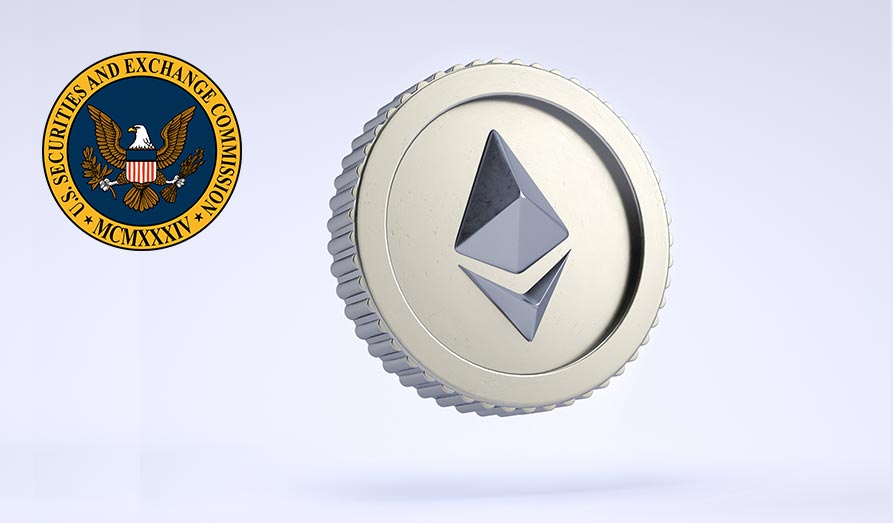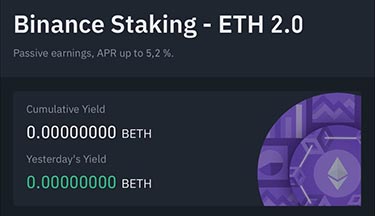
The SEC Chair, Gary Gensler, has recently commented on Ethereum’s transition to the Proof of Stake model. He questions whether ETH can be classified as security after the Ethereum Merge.
Why does Gary Gensler’s question matter? The transition has been smooth for the Ether coin. This change is highly new, and there have not been any major technical issues. Time will tell if the Merge is acceptable or has introduced new weaknesses, like in the case of the 2019 Constantinople update. Crypto Lists Ltd explore the views that occur and pose explanations for Gary Gensler’s question on the asset as a security.
SEC´s charmain speaks out
The Securities and Exchange Commission (SEC) Chairman Gary Gensler has things to speak concerning the situation as he can decipher what is and is not a security in the SEC. Gensler states that staking through third parties has a potential implication on securities laws. Gensler says that if a crypto exchange offers staking services, it is the same as lending but with changes to the labeling.
The criteria Gensler speaks to is a test used by courts to determine whether an asset is a security. It is known as the Howey Test. Gensler also maintained that using the Howey Test, digital currency networks and intermediaries letting users stake their coins may be a security. The test is an acceptable way to determine what security is. It relies on an assessment of whether investors expect to earn a return from the work of third parties; to assess whether the transaction qualifies as an investment contract.
Gensler also looks into the perspective of the coin and states that the Howey test indicates that the investing public is expecting profits based on the efforts of the other. Wikipedia explain the topic SEC vs W. J. Howey Co in more detail.
The claim shows that it is not easy to argue that ETH stakers are doing any work of their own. Stakers park coins and expect profits to flow, which explains that it acts like an investment and demonstrates the high likelihood of ETH being secure.
Ethereum’s upgrade to the Proof of Stake model shows that if classified within a category of assets, including stocks and bonds, it would be required to file extensive disclosures with the SEC.
The cryptocurrency would face strict liabilities if it were to sell any assets deemed to be securities by the SEC or the courts.
Gensler’s comments on Ethereum show that the SEC is looking at it closer now that the Merge has happened. Gensler hints that there is not much difference between the treatment of cryptocurrencies and the capital market.
Gensler’s comments could dampen the Ethereum community’s excitement after the Merge as it represents a broader effort by global lawmakers to regulate the crypto industry.
Supply: 118,780,000 / 200,000,000
Release date: August 1, 2014
Description: Keen on buying Ether and get staking rewards or do you rather go short in ETH? Learn more about the world’s second most traded cryptocurrency here.
Risk warning: Trading, buying or selling crypto currencies is extremely risky and not for everyone. Do not risk money that you could not afford to loose.
What is required if Ether becomes security?
The requirement anchors on the Howey Test detailed in a 1946 U.S. Supreme Court ruling used to determine whether an asset is a security. Therefore, it is essential to understand the Howey test and the concept of staking in a proof-of-stake system. The Howey test needs to define the asset as an investment contract that meets the criteria where a person invests their money in an enterprise and is led to expect profits solely from the efforts of a third party. The test requires the asset to meet the criteria. There are potential possibilities that the Merge could create regulatory hitches by transforming Ether, the network’s native asset, into security under U.S. law.
Additionally, the asset should register with the SEC as the crypto-lender must be registered with the regulatory body if it passes as security. Failure to do this could result in costly fines.
Will ETH stake draw lots of new investors?
Staking is an excellent way to draw investors. Still, the security classifications mentioned below will explain how constraints such as withdrawal time and a locked contract might not be as ideal for institutional investors.
The Merge was a significant development for the Ethereum network and will go down in history. The transition from a proof-of-work to a proof-of-stake consensus mechanism was successful. The blockchain reduced its energy usage by 99.95% from a rate as high as 94 TWh annually. Therefore, this situation should show regulators that they should be calm and reduce the threats to clamp down on blockchain networks for environmental profligacy. With such a situation, ETH brings more institutional investors into cryptocurrency.
Institutional investors, for example, pension funds, insurance companies, and foundations, matter, and broad participation could help solve the cryptocurrency’s persistent liquidity and volatility problems. It provides new staking opportunities and becomes a more eco-friendly platform for corporations and large financial institutions.
On the other hand, some investors do not believe in ETH as it does not solve its lack of scalability at the moment. Therefore, accelerating adoption by institutional investors will take more time.
Bank of America analysts suggest that institutional investors who were previously prohibited from investing in PoW-generated tokens could participate. The significant reduction in energy consumption contributed to this change of stand.
The PoS mode makes Ether an asset that can earn interest for holders via staking, which increases the total return for ETH holders and makes the investment more attractive to prospective investors.

Is the Yield from ETH worth it?
You can stake your ETH as a PoS Ethereum validator and receive approximately a 5% annual yield. Ethereum’s new staking opportunities may bring in more traditional investors with its close resemblance to traditional financial instruments that make regulators view it as such. However, after Gensler’s statement – many ETH investors are worried that the Howey test will lead to ETH becoming a security in the near future. That would initially most likely lead to a way lower price for ETH, but in the long run – it might help Ether.
The new software is not thoroughly tested at scale, and the staking rewards have strings attached. For starters, you will not be able to withdraw your staked Ether or bonuses. Also, institutional investors will stake their ETH, which is locked in a contract. You cannot withdraw for at least 6 to 12 months after the Merge. The inability to withdraw is a risk that institutions are unwilling to take. Therefore, most investors will most likely take a wait-and-see approach. The downside is that if the overall stock market crashes, driven by fear of inflation, those waiting for institutional investors to save the crypto industry will be waiting for a longer time.
Ethereum will build its name as it has slapped the Telegram Group and Kik Interactive down before exhibiting a willingness to take on the biggest entities in the industry following its lawsuit against Ripple Labs. Ether has the right potential to risk the ranks and build its reputation in the investment world.
Impact of SEC Chair Gary Gensler’s Comment
The SEC has always been campaigning for jurisdiction over crypto. The recent developments on the Ethereum merge turned SEC’s spotlight on the native token. Gary Gensler believes that most cryptocurrencies are securities and the current Pos System requires Ethereum validators to stake ETH. This aligns with the Howey Test.
Gary Clenser highlighted that the Ethereum Merge makes ETH a security. The recent comments by the SEC chair caused a significant drop in the ETH price with the coin currently priced at $1357.
Some bipartisan senators are pushing for ETH and BTC to be regulated by Commodity Futures Trading Commission (CFTC) which is more amenable than the SEC. The much-debated treatment of crypto to securities laws continues as Crypto Lists keeps tabs on any new developments.





 Enjoy midweek fun on ETH Casino with zero KYC ever
Enjoy midweek fun on ETH Casino with zero KYC ever 3 Ethereum casinos to rake back those Ether losses on!
3 Ethereum casinos to rake back those Ether losses on! Try a USDT-focused casino today on Tether Bet!
Try a USDT-focused casino today on Tether Bet!
























